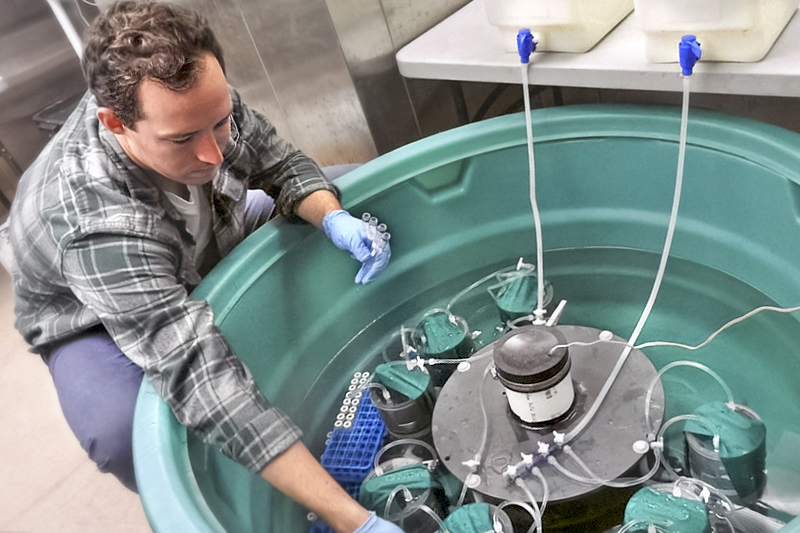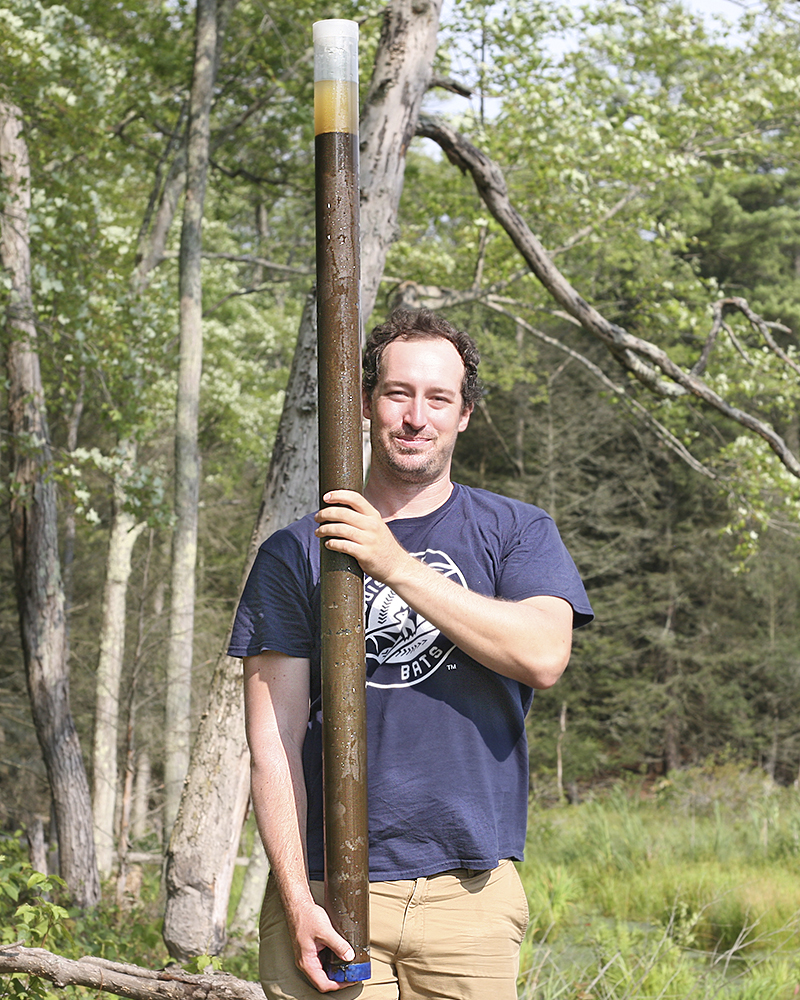


New insights into nitrogen fixation
Photos courtesy of Nicholas Ray August 06, 2025
Study examines the role freshwater and coastal ecosystems play in nitrogen fixation
Nitrogen is vital for all known life. Yet most nitrogen on Earth is in the atmosphere as di-nitrogen gas, which many organisms can’t use. Fortunately, there are microbes that can tap into this abundant pool and — through a process called biological nitrogen fixation — change the gas into a usable source of nitrogen, such as ammonia, for plants, plankton and algae. This provides nitrogen to animals when those plants are consumed.
While nitrogen fixation estimates have been studied for decades in the open ocean and terrestrial ecosystems, its role in other aquatic systems has largely been ignored.
Funded by the National Science Foundation (NSF), a research coordination network including the University of Delaware’s Nicholas Ray looks to change that with a paper on nitrogen fixation in freshwater and coastal ecosystems recently published in Science.
Ray, assistant professor in the School of Marine Science and Policy, said historically, nitrogen fixation in these freshwater and coastal systems did not get much attention in global nitrogen budgets, the estimated amount of nitrogen that can be released into the atmosphere.

“We knew that lots of people were going out and measuring nitrogen fixation everywhere — especially in ponds, lakes, rivers and streams, and estuaries — but that information was never actually getting into these global budgets,” Ray said. “So, we undertook a large synthesis and pulled data from almost 5,000 measurements of nitrogen fixation in these systems.”
When they looked at the data, they saw these systems play an important role in the global budgets, and while these systems might be small, they have an outsized impact. In the paper, the researchers conservatively estimate that, despite accounting for less than 10%of the global surface area, inland and coastal aquatic systems fix the equivalent of 15% of the total nitrogen fixed on land and in the open ocean.
“This was an incredibly exciting result,” Ray said. “It’s kind of a fundamental change in our understanding of how important these systems are in global nitrogen budgets.”
Ray said this paper would not have been possible had it not been for the collaborative efforts of the NSF research coordination network.
“These working groups offer an opportunity for you to test your ideas, share your ideas and see what people think,” Ray said. “You get different perspectives and when you put that together, you get some exciting results. We were all excited that this paper came out in Science. When we started, we didn’t have an idea that we might end up there. I think having all these people with their different voices and ideas really pushed that forward.”
Ray was also part of an original working group that published a paper in January putting together a global dataset of nitrogen fixation rates across inland and coastal waters. The researchers on this paper used that dataset for their findings.
With another NSF working group starting up to continue this project forward, Ray said there are several directions the researchers can go. He is excited to try and understand if these datasets can be used to better understand when and where nitrogen fixation is happening.
In addition, now that the importance of these systems is known, the researchers can start to think about management tools.
“Rehoboth Bay and Indian River Bay are about 10-15 minutes down the road,” said Ray, who works at UD’s campus in Lewes. “These systems have a lot of nitrogen going into them and they have nitrogen pollution problems. We can think about whether or not nitrogen fixation contributes to these types of problems, if it’s kind of less important or maybe it’s something that we do need to think about when we’re managing the inputs of nitrogen to the system.”
Contact Us
Have a UDaily story idea?
Contact us at ocm@udel.edu
Members of the press
Contact us at mediarelations@udel.edu or visit the Media Relations website

